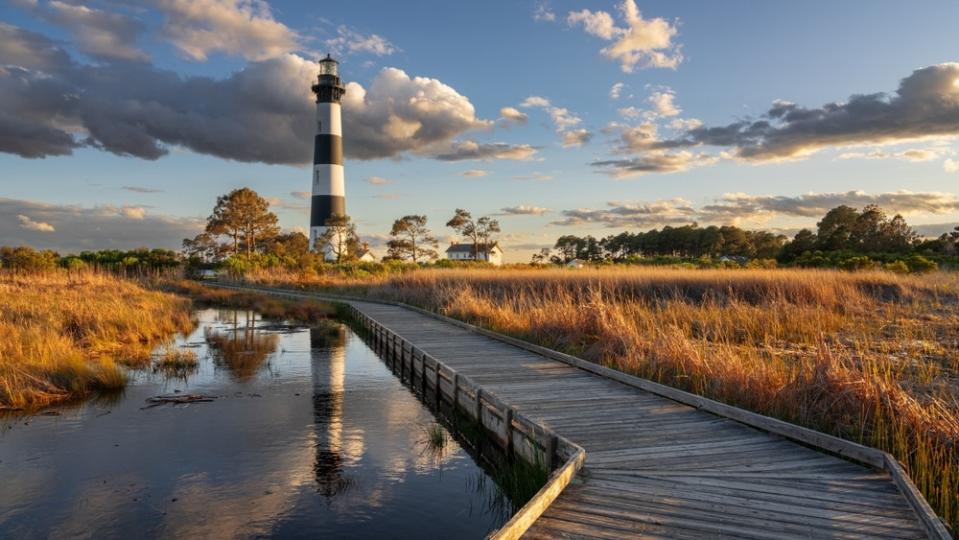Predicted Sea Level Rise Could Pose Major Threat To North Carolina Real Estate

The North Carolina coast is one of the Sunbelt's most popular destinations for real estate investors, retirees, and vacationers. Unfortunately, the Carolina Coast is at severe risk of flooding if the National Oceanographic and Atmospheric Administration's (NOAA) estimates for sea level rise prove to be correct. The danger is most acute in North Carolina's Outer Banks and barrier islands, which would be adversely affected by just a three-foot rise in water levels.
The projected sea-level rise and sand erosion are being driven primarily by climate change. At this point, it appears as if the only question is how much sea-level rise the North Carolina coast will experience as opposed to "if" sea levels will rise. The Intergovernmental Panel on Climate Change, which is sponsored by the United Nations, estimates that global sea levels will rise by between one and four feet by 2100.
However, it concedes those projections could be low depending on other factors and the total sea-level rise could be as high as seven feet. In North Carolina's case, even a sea-level increase of three feet, which is on the lower end of the Intergovernmental Panel on Climate Change (IPCC) or NOAA's predictions, could pose a severe threat.
Don't Miss:
Only 0.2% of single-family rentals make this platform's rigorous cut. You can co-invest in them with Jeff Bezos and other notable investors for only $100.
Elon Musk, Ken Griffin and Jeff Bezos are bullish on one city that could dethrone New York and become the new financial capital of the US. Investing in its booming real estate market has never been more accessible.
Wilmington, North Carolina's downtown river walk financial and entertainment district could find itself underwater if the worst-case scenario of six feet of sea level rise hits. Additionally, Dare, Tyrrell, and Hyde Counties would all be submerged. Outer Banks communities like Nags Head, Cape Hatteras, Rodanthe, and Kitty Hawk would all be at risk. Kitty Hawk is perhaps most famous for being where the Wright Brothers launched their first airplane and has a museum commemorating the occasion.
Although these areas are somewhat sparsely populated, they have been extremely popular vacation destinations for decades and help generate millions of dollars in annual revenue for North Carolina's economy. Wilmington is one of North Carolina's largest and most important cities. Deeper into the Albemarle Sound, North Carolina also has a network of top-tier golf courses including Occano, the Links at Mulberry Hill, and the Sound Golf Links at Albemarle Plantation that would also be at risk.
Long story short, even a smaller-than-expected sea level rise along the North Carolina coast would be a financial and humanitarian disaster. Some cities like Nags Head are already calculating this in their zoning decisions and the state government has been widening the beaches by adding sand. However, none of those measures would be significant enough to completely offset the danger posed by climate change.
Although the year 2100 seem far away, scientists and environmentalists are quick to note that 75 years pass quickly in historical terms. That is just one human life span, which means anyone born on the Outer Banks today or anyone under 30 living in that region will likely experience the brunt of the crisis as 2100 approaches. In the short term, as water temperatures continue to rise, so does the risk of intensified hurricanes.
That means area real estate values and insurance rates will be affected long before NOAA's projections materialize. Florida is already facing an insurance crisis and any region with long coastlines and warming waters will likely face a similar conundrum very soon. For all these reasons, real estate investors and retirees would be well advised to consider risks related to climate change before making big bets on North Carolina's coast.
Read Next:
Want to Create a Passive Income Stream? These High-Yield Real Estate Notes Might Be Your Holy Grail
This Bezos-backed startup selects America's prime single-family rentals and then lets you invest in them starting from $100.
"ACTIVE INVESTORS' SECRET WEAPON" Supercharge Your Stock Market Game with the #1 "news & everything else" trading tool: Benzinga Pro - Click here to start Your 14-Day Trial Now!
Get the latest stock analysis from Benzinga?
This article Predicted Sea Level Rise Could Pose Major Threat To North Carolina Real Estate originally appeared on Benzinga.com
© 2024 Benzinga.com. Benzinga does not provide investment advice. All rights reserved.

 Yahoo Finance
Yahoo Finance 